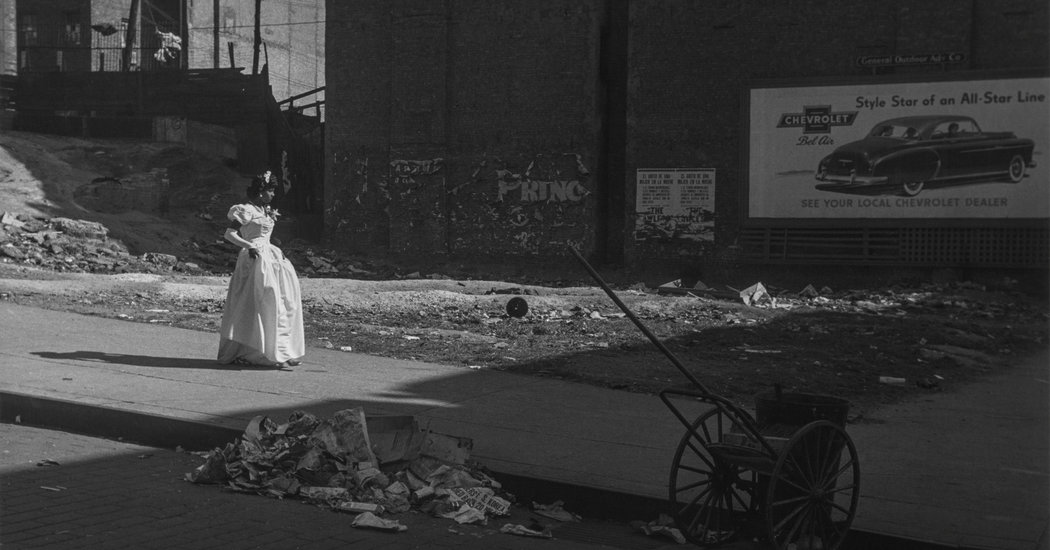One particular of the best exhibitions of the period is devoted to the work of the great postwar photographer Roy DeCarava. Break up among the uptown and downtown galleries of David Zwirner, it was structured on the centennial of the artist’s delivery by his widow, Sherry Turner DeCarava, an artwork historian.
At Zwirner on the Higher East Facet, “The Audio I Saw” concentrates on DeCarava’s photos of musical subjects. At Zwirner in Chelsea, the much bigger “Light Break” treats the full assortment of his pursuits, from the civil legal rights movement to photographs of city workers, landscapes and parks. Totaling just about 150 photos, this is a museum-worthy endeavor viewed in the more accessible, intimate spaces of the professional gallery — the best of the two worlds.
DeCarava’s get the job done is itself the best of equally worlds: visually demanding yet incalculably sensitive to the human predicament and the psychology of daily everyday living, in particular about but not restricted to African-Us residents. He studied painting and printmaking, in advance of committing to the digital camera, which could have helped him enrich his new medium in conditions of both equally visual appearance and this means. DeCarava’s popularity began to develop in the early 1950s, dependent on his sympathetic portrayals of the citizens of Harlem, exactly where he was born in 1919 and raised by a solitary mother, and of the many musical luminaries pursuing blues or jazz, this country’s very first modern artwork. These bundled Billie Getaway, Duke Ellington and John Coltrane, who determine in the uptown clearly show.
Sometimes his subjects seem simply just to increase over these hardships, like the young lady in “Graduation,” just one of his most effective known pictures wearing a white robe, she seems to float majestically alongside a sidewalk flanked by an vacant whole lot and a pile of trash. Occasionally obstructions are reflected, as in the grave perseverance on the deal with of a youthful freedom marcher in Washington in 1963. And at occasions they are described with throat-catching natural beauty and disturbing ambiguity, as in the person in “Pepsi,” who extends his arms and higher torso to raise a situation of the soft drink.
Blackness was the overarching theme of DeCarava’s art — his kind, his content material and the subject matter subject (the tales his photographs convey to) all in 1. His illustrations or photos constantly emphasize the attractiveness of black individuals, artists and culture. But initial there is the putting darkness of his pictures as objects, irrespective of subject, which he accomplished by making use of innovative printing methods.
DeCarava’s function encompasses an remarkable range of shadowy tonalities, from deep charcoal to pale haze. Illuminated by exquisitely spare makes use of of light-weight or contrasting blocks of relative brightness, his pictures are at the moment alluring, mysterious and difficult. At near variety, they expose layered meanings that are variously psychological, social, cultural, even structural. The richness and range of dark tones enact the deep written content of DeCarava’s art they frequently flip among visual reality and a metaphor for variation of all varieties.
The first graphic of the downtown exhibit, “Wall Street, Morning” of 1960 demonstrates a tonal complexity commensurate with DeCarava’s outstanding printing abilities. A slim wedge of sky driven in between seemingly opaque properties casts the fernlike curl of a streetlight in stark silhouette. Underneath, an astounding panoply of deep smooth grays emerges from the shadows: creating facades, sidewalks, pavement. It is a tour de force in all senses.
At times it took several failures in the darkroom just before DeCarava designed an appropriate print. This was the case with “Light and Shade,” an aerial view of a playground that includes two boys clutching toy pistols in a match of cowboys, even though it may consider a instant to make out the next child scarcely noticeable in the shadows.
In “Progressive Labor” (1964) DeCarava acknowledges racial violence, but indirectly. Following to the substantially truncated signal for the Progressive Labor Party’s offices at the remaining of the image (it reads “ressive/BOR”) is a poster whose cartoonish vitality depicts many policemen, each attacking a boy or girl with a billy club. On the sidewalk under, one more drama unfolds. A white gentleman who wears some type of badge glares as individuals stroll earlier a storefront whose iron gate is viciously bent.
From time to time the differences captured by DeCarava issue class extra than race. In “Man Lying on Park Bench, Bangkok” (1987), which could be from any spot in the environment, DeCarava shot throughout a slender body of h2o. He captures a summery scene bathed in light: a lavish white dwelling perched around the water and the matching silhouettes of a male and a lady in a boat idling close by. But this vignette is framed and increased by a darker just one on the nearer bank, the place DeCarava stood. Its shadowy silhouettes involve the floor, a tree and a gentleman who appears to be sleeping on a stony bench. He is outside the summer time idyll, nevertheless his existence and its odalisque-like grace is necessary to the ambiguous elegance that distinguishes DeCarava’s artwork.
Roy DeCarava: The Sound I Observed
Via Oct. 26 at David Zwirner, 34 East 69th Avenue, Manhattan davidzwirner.com.
Roy DeCarava: Mild Split
By way of Oct. 26 at David Zwirner, 533 West 19th Avenue, Manhattan davidzwirner.com.
